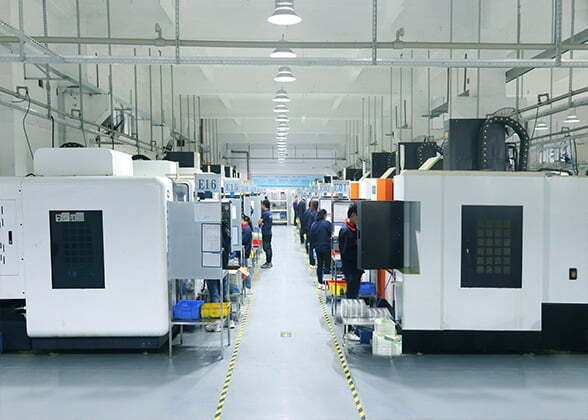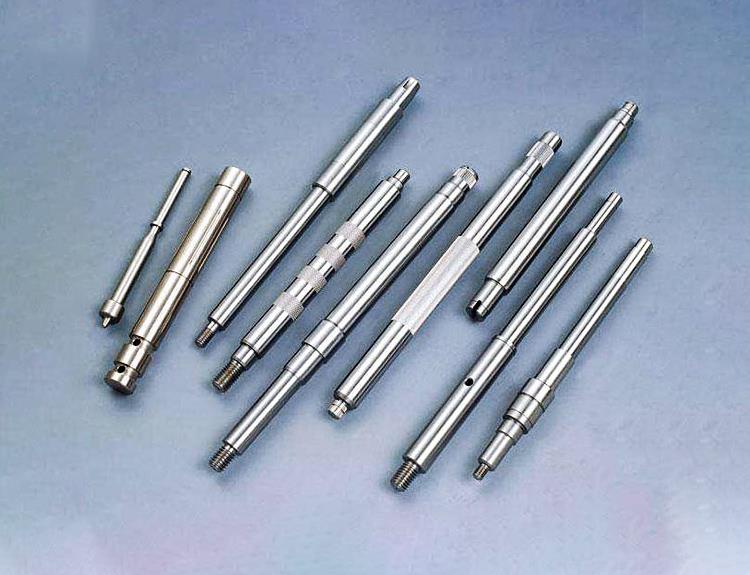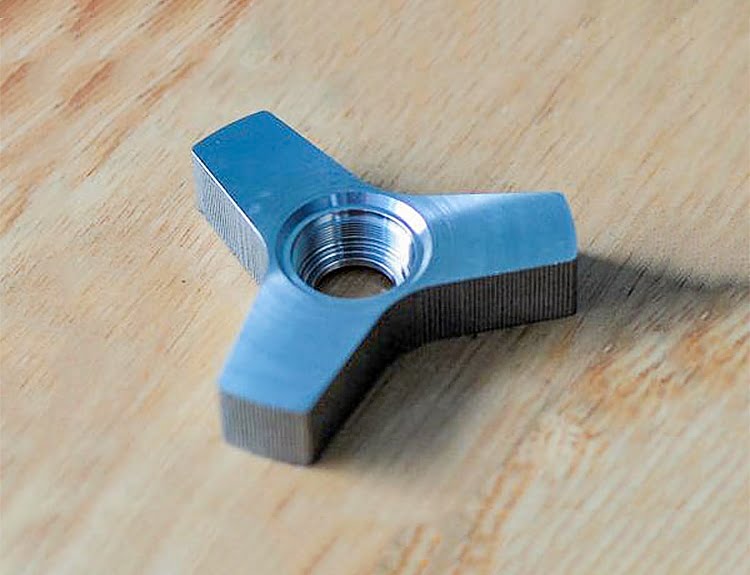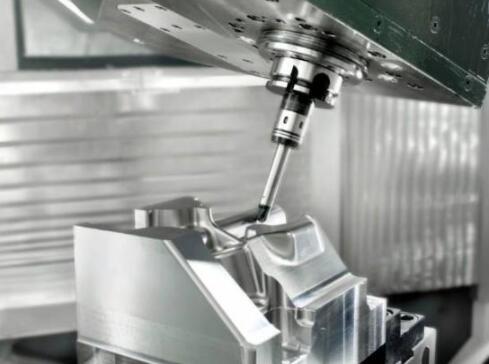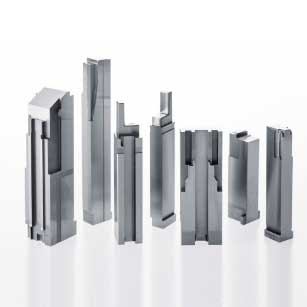Ⅰ. General rules of the tool path
Open coarse: under the maximum load of the machine tool, the majority of cases should be selected as large as possible, the largest possible amount of feed, as fast as possible feed. In the case of the same tool, the feed is inversely proportional to the amount of feed. In general, the load of the machine is not a problem, the principle of knife selection is mainly based on the product's two-dimensional angle and three-dimensional arc is not too small to consider. After choosing a good knife, then set the length of the knife, the principle is that the knife is longer than the processing depth, large workpiece is to consider whether the collet has interference.
Light knife: the purpose of the light knife is to meet the surface finish of the workpiece, leaving a suitable margin of processing requirements. Again, the bare tool is chosen to be as large as possible and as fast as possible, as the finishing tool requires a longer time with the most suitable feed and feed. In the same feed the larger the transverse feed the faster. The amount of surface feed is related to the finish after machining, the size of the feed is related to the shape of the surface's appearance, leaving the smallest margin, using the largest knife, the fastest speed and the appropriate feed without hurting the surface.
Ⅱ. Clamping methods
- All clamping is horizontal and vertical.
2, vise clamping: clamping height should not be less than 10 mm, in the processing of the workpiece must specify the clamping height and processing height. The processing height should be about 5 mm above the vise plane, the purpose is to ensure the solidity, while not hurting the vise. This kind of clamping is a general clamping, clamping height is also related to the size of the workpiece, the larger the workpiece, the clamping height increases accordingly.
3, clamping plate: clamping plate with code code on the workbench, the workpiece with screws locked in the clamping plate, such clamping is suitable for clamping height and processing force is not enough workpiece, general medium and large workpiece, the effect is better.
4, code iron clamping: in the workpiece larger, clamping height is not enough, and not allowed to lock the bottom of the wire, then use the code iron clamping. This kind of clamping needs to be secondary clamping, first code good four corners, processing other parts, and then code four sides, processing four corners. Do not let the workpiece loose during the second clamping, first code and then loose. You can also first code two sides, processing the other two sides.
5, the tool clamping: diameter 10mm above, the clamping length of not less than 30mm; diameter 10mm below, the clamping length of not less than 20mm. tool clamping to firmly, strictly prevent the collision knife and directly into the workpiece.
Ⅲ. The classification of the tool and its scope of application
1, according to the material points.
White steel knife: easy to wear, used for copper male and small steel material open rough.
Tungsten steel knife: used to clear the corner (especially steel material) and light knife.
Alloy knife: similar to tungsten steel knife.
Purple knife; used for high-speed cutting, not easy to wear.
2, according to the knife head points.
Flat bottom knife: used for plane and straight body side, clear plane angle.
Ball knife: for a variety of curved surfaces in the light, light knife.
Bull nose knife (with single side, bilateral and five sides): for steel open rough (R0.8, R0.3, R0.5, R0.4).
Rough skinned knife: used for opening rough, pay attention to the residual left method (0.3).
3、According to the knife rod points.
Straight bar knife: straight bar knife for all occasions.
Oblique rod knife: but not for straight body surface and slope less than the surface of the rod slope.
4, according to the knife blade points.
Two edges, three edges, four edges, the more edges, the better the effect, but the more work done, the speed and feed adjusted accordingly, the number of edges long life.
5, ball knife and flying knife light knife difference.
Ball knife: concave ruler is less than the ball ruler, plane ruler is less than the ball R, light can not (clear the bottom angle).
Flying knife: the advantage is to be able to clear the bottom angle. Comparison of the same parameters: V = R * ω speed is much faster (flying knife), the force of the light out of something bright, flying knife more often used for equal height profile, sometimes with flying knife does not need to be in the light. The disadvantage is that the size of the concave surface and the plane ruler is less than the time of the flying knife diameter.
Ⅳ. CNC with EDM, copper male practice
1、What is the need to do copper male.
Knife completely can not go down to do copper male, in a copper male and can not go down, the shape is convex need to be divided again.
The knife can go down, but easy to break the knife also need to do copper male, this need to be based on the actual situation.
Products that require a flaming pattern need to be made of copper.
Copper male can not do, the bone position is too thin and too high, easy to lose male and easy to deformation, processing deformation and sparking deformation, then need to set pieces.
The surface of the product (especially the curved surface will be very smooth and even) can overcome many problems in the finishing gong and many problems in the drawing.
Require precise shape or margin must be done when the rough copper male.
2, the copper male practice.
Selected to do the copper male face, make up the full complement of the face, or extend the extended face, to ensure that all the edges of the copper male greater than the edge to be played at the same time does not hurt other products face, remove unnecessary clear not to the plane angle (intersected with the plane angle is deeper glue bit), fill into the regular shape; find the maximum shape of the copper male, with a boundary and then projection to the tor surface; set out the size of the reference frame, cut off the tor surface, to this copper male figure basic The actual length and width of the copper material must be greater than the reference frame on the drawing. High ≥ theoretical size of the copper male + benchmark frame high + clamping height.
Ⅴ. The drawing fixed number of problems
1, in the absence of ready-made machining surface, plane four-sided divided, the centre of the origin, the top face zero, the top surface is not flat (for copper male) leave a margin of 0.1, that is, when touching the number, the actual to 0 (z), the figure is low 0.1.
2, when there is a ready-made processing surface, so that the figure of the ready-made face 0 (z), the plane can be divided in the middle, otherwise to ready-made side touch number (single-sided) processing surface is to check the actual height, width, length and drawing differences, according to the actual material to programming. In general, the first processing into the size of the figure and then processing the shape of the figure.
3, when more than one bit of processing, the first bit (standard bit), we must gong several other bits of the benchmark, length, width and height are to gong, all the next processing benchmark to the last time has been processed surface shall prevail.
4, the positioning of the insert: placed inside the whole, the following pad up to a certain height and then the drawing is also elevated to this height, the plane according to the overall division, the height according to the figure below with a dowel lock; is square and square can be straight division; rough a little available maximum shape division; cut a fixture, according to the fixture division, the relative position of the insert figure and fixture to determine and then the origin of the drawing in the fixture centre point.
Ⅵ. The choice of roughing tool path
1、Surface grooving
The key is the choice of range and the choice of surface.
The toolpath processing area is: the selected surface within the selected range is the termination surface, from the highest point to the lowest point of the tool can go down all places for the principle. The selected face is preferably the whole face, the boundary can only be the area to be processed, no face at the extension of less than half the distance of the tool diameter, because the other face left enough margin so automatic protection; the best extension of the lowest line, because the lowest place has a R gong less than.
The choice of knife: if the tool can not spiral or diagonal into the knife when or processing can not enter the area of the knife into the area sealed up and left for the second open rough.
Light knife before, must be not open rough area all open rough, especially the small angle, which includes two-dimensional angle, three-dimensional angle and sealed up area, otherwise it will break the knife. Secondary roughing: generally use three-dimensional gouging to select the range, flat-bottomed knife, can use the plane gouging with the shape of the knife path is used. In the case of not hurting the other face tool centre to the selected boundary, generally do not refine the boundary, with a fast two-way angle depending on the situation, spiral into the knife, the angle of 1.5 degrees, high 1, when the shape of the groove for the bar, can not spiral under the knife then use the diagonal into the knife, generally open the filter, especially surface roughing, into the knife plane must not be low, so as not to crash the knife, the safety height must not be low.
Retreat: generally do not use the relative retreat, with absolute retreat, when there is no island then use the relative retreat.
2, plane grooving: milling a variety of planes, concave and flat groove, when milling part of the open plane, it is necessary to set the boundary, the principle can enter the knife (greater than a knife diameter), open at the outside of the bias greater than half a knife diameter, closed periphery.
3, shape: when the selected plane is suitable for shape layering, then use the shape layering lifting knife (plane shape), lifting knife point and the next knife point for a point, do not need to lift the knife z plane general lifting knife, try not to use the relative height; fill the direction of the general right fill (Shun knife).
4, mechanical correction of the tool path settings: correction number 21, change the computer correction of mechanical correction, into the knife for the vertical into the knife, the knife can not pass the place to change the large R does not leave a margin.
5、Equal height profile: suitable for going closed face, go open face if it is four circles to seal the item face, if it is within four circles or non-four circles to choose the range and height (a certain arc into the knife to open the rough), used to open the rough situation: the processing distance in any plane is less than a knife diameter, if greater than a knife diameter to use a larger knife or two equal height profile.
6, curved flow line: with the best uniformity and dryness, suitable for light knife many times can replace the contour profile.
7, radial knife path: suitable for the middle of a large hole (rarely used). Note: bullet knife, knife is not sharp, knife is too long, the workpiece is too deep to go around not up and down; workpiece in the sharp angle of the two sides of the face to be divided into two knife path, not to cross over, light knife when the edge is best extended (with an arc into and out of the knife).
Ⅶ. Clear the corner
1, here the clear corner clear is two-dimensional dead corner, is the front of the process have not gone to the part, such as light knife need to go to the place should first clear the corner and then light knife, too small and deep corner can be divided into a few knife clear, do not use a small knife to clear too many places.
2, clear three-dimensional corner: open some small grooves, some three-dimensional corner.
3, easy to break the knife, must be considered like a fine knife, too long, processing too much (mainly z direction, depth direction).
4, knife path: with two-dimensional shape away, can only clear the small angle (R0.8) and two-dimensional plane angle; with parallel knife path; with equal height profile; there is a place where the knife can not go to the surface and shape away from the dead angle is to first seal up the starting knife, and finally clear the angle, the small gap in the large surface is generally sealed up first.
Ⅷ. Mid-light
1、Medium light: as a surface of the steel material and fine male only in the light.
2、Principle: large knife open coarse layer with more margin between the layers, in order to make the light knife when the better effect of a process.
3、Characteristic: fast removal, large knife flying knife can also be, large feed, large spacing; do not have to worry about the surface quality; flat workpiece does not need to be in the light; equal height profile workpiece does not need to be in the light, equal height profile roughing can be fine to put the two processes together, fine refers to the surface margin and layer to layer distance; need to be in the light, there is an important factor is the material of work, the harder the material, then consider the light; the processing of the light direction and light knife open coarse best relative so that the processing of things will be good, uniform.
Ⅸ. Light knife
Light knife is to achieve a variety of products and mould assembly requirements so be very careful, according to the different requirements to give different tool settings and parameter settings.
1, the light knife under the knife height and the final height are changed to 0, tolerance design within 1 silk, no filtering (the smaller the workpiece tolerance is small, tolerance affects the appearance).
2、The front mould and parting surface should achieve the best finish, the rear mould can be second, other non-cooperative and avoid empty space can be rough point.
3、The design of the tool path is determined by the following factors.
Specific shape (such as plane and other surface), steep surface and flat surface.
Whether the sharp angle between the two surfaces (sharp angle is separated).
Whether the two parts have different requirements (to leave a margin or not, the amount of the margin, the different requirements of the finish).
The problem of protecting the surface in the light knife is a big issue. The surface that has been machined must be protected in anticipation of the errors in the machining, and protected according to the requirements of the protection of the surface. Range protection, regardless of the error of 0 protection, height range and plane range; protection surface protection.
The extension of the knife path problem, in the light knife, the knife path processing to the edge of the best to make a circular arc into and out of the knife otherwise prior to the surface slightly extended.
The problem of lifting the knife in the light knife. It is a waste of time to lift the knife, so try to avoid lifting the knife.
Method 1: Set up a lifting gap (small notch)
Method 2: Cover and seal up the knife lift (small gap)
Method 3: Avoid the gap (large notch)
Method 4: Extend to the same height when contouring
The problem of knife feed in the light knife, the first knife feed must be from outside the workpiece to avoid vibration and bruising the workpiece, all light knives must be set into the knife.
Tool wear problem: When the workpiece is large, more than one tool is needed to finish the same workpiece.


